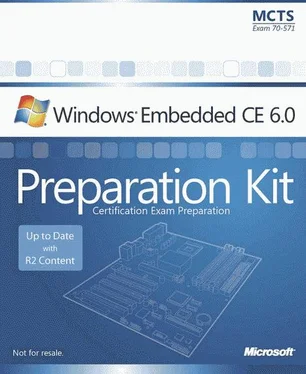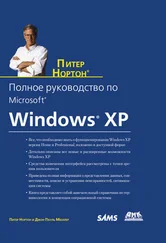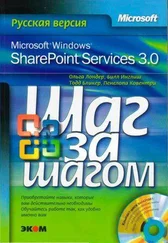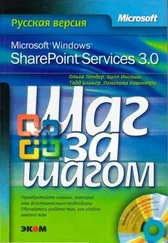Nicolas Besson - Microsoft Windows Embedded CE 6.0 Exam Preparation Kit
Здесь есть возможность читать онлайн «Nicolas Besson - Microsoft Windows Embedded CE 6.0 Exam Preparation Kit» весь текст электронной книги совершенно бесплатно (целиком полную версию без сокращений). В некоторых случаях можно слушать аудио, скачать через торрент в формате fb2 и присутствует краткое содержание. Город: Redmond, Год выпуска: 2008, Издательство: Microsoft, Жанр: Руководства, ОС и Сети, Программы, на английском языке. Описание произведения, (предисловие) а так же отзывы посетителей доступны на портале библиотеки ЛибКат.
- Название:Microsoft Windows Embedded CE 6.0 Exam Preparation Kit
- Автор:
- Издательство:Microsoft
- Жанр:
- Год:2008
- Город:Redmond
- ISBN:нет данных
- Рейтинг книги:5 / 5. Голосов: 1
-
Избранное:Добавить в избранное
- Отзывы:
-
Ваша оценка:
- 100
- 1
- 2
- 3
- 4
- 5
Microsoft Windows Embedded CE 6.0 Exam Preparation Kit: краткое содержание, описание и аннотация
Предлагаем к чтению аннотацию, описание, краткое содержание или предисловие (зависит от того, что написал сам автор книги «Microsoft Windows Embedded CE 6.0 Exam Preparation Kit»). Если вы не нашли необходимую информацию о книге — напишите в комментариях, мы постараемся отыскать её.
Microsoft Windows Embedded CE 6.0 Exam Preparation Kit — читать онлайн бесплатно полную книгу (весь текст) целиком
Ниже представлен текст книги, разбитый по страницам. Система сохранения места последней прочитанной страницы, позволяет с удобством читать онлайн бесплатно книгу «Microsoft Windows Embedded CE 6.0 Exam Preparation Kit», без необходимости каждый раз заново искать на чём Вы остановились. Поставьте закладку, и сможете в любой момент перейти на страницу, на которой закончили чтение.
Интервал:
Закладка:
Lesson Summary<\/p> <\/div>
Power management is an important Windows Embedded CE feature that ensures efficient power consumption on target devices. OEMs should implement power management features in the OAL to enable transitions from full-power mode to Idle and Suspend modes and Critical Off state for battery-powered devices. Implementing power management support involves re-synchronizing timer-related kernel variables, powering down peripherals, putting RAM into self-refresh mode, setting wakeup conditions, and suspending the CPU. It is not trivial to implement these low-level routines, yet Microsoft provides sufficient reference code in the sample BSPs to get a better understanding of the implementation details.<\/p>
Lab 5: Adapting a Board Support Package<\/p> <\/div>
In this lab you clone a reference BSP in Visual Studio 2005 with Platform Builder and use it to build a run-time image. As the underlying platform, this lab uses the Device Emulator because this platform can run on the Windows Embedded CE development computer. Microsoft included the Device Emulator BSP in Platform Builder as a reference BSP.<\/p>
To help you successfully master the procedures presented in this Lab, see the document "Detailed Step-by-Step Instructions for Lab 5" in the companion material for this book.<\/p> <\/cite>
► Clone a BSP<\/p> <\/div>
1. In Visual Studio 2005, open the Tools menu, click Platform Builder For CE 6.0, and then click Clone BSP.<\/p>
2. In the Clone Board Support Package window select Device Emulator: ARMV4I as the Source BSP from the drop-down list.<\/p>
3. Under New BSP Information enter the information shown in Table 5-12 (see also Figure 5-10):<\/p>
Table 5-12 New BSP details<\/strong> <\/p>
| Parameter<\/th> | Value<\/th> <\/tr> |
|---|---|
| Name<\/td> | DeviceEmulatorClone<\/td> <\/tr> |
| Description<\/td> | Clone of the Device Emulator BSP<\/td> <\/tr> |
| Platform Directory<\/td> | DeviceEmulatorClone<\/td> <\/tr> |
| Vendor<\/td> | Contoso Ltd.<\/td> <\/tr> |
| Version<\/td> | 0.0<\/td> <\/tr> <\/table>
4. Select Open New BSP Catalog File In Catalog Editor check box and then click Clone.<\/p> 5. Verify that Platform Builder clones the Device Emulator BSP successfully, and then in the corresponding Clone BSP dialog box, click OK.<\/p> 6. Verify that Visual Studio automatically opens the DeviceEmulatorClone.pbcxml catalog file. Close the catalog editor without making any changes.<\/p> ► Create a Run-Time Image<\/p> <\/div> 1. In order to validate our cloned BSP, create a new OS design based on the DeviceEmulatorClone BSP. Call the OS design DeviceEmulatorCloneTest, as illustrated in Figure 5-11 (see also Lab 1 in Chapter 1 for details on how to accomplish this step).<\/p> 2. Choose Industrial Device in the Design Templates and Industrial Controller in the Design Template Variants. Accept the default options in the subsequent steps of the wizard.<\/p> 3. After Platform Builder generates the DeviceEmulatorCloneTest project, verify the OS design by examining the catalog items in Catalog Items View.<\/p> 4. Verify that the Debug build configuration is enabled by opening Configuration Manager on the Build menu and seeing if the Active Solution Configuration list box displays DeviceEmulatorClone ARMV4I Debug.<\/p> 5. On the Build menu, click Build Solution.<\/p> 6. After the build is completed, configure the Connectivity Options to use the Device Emulator.<\/p> 7. Open the Target menu and click Attach Device to download the run-time image to the Device Emulator and start Windows Embedded CE. Notice the debug messages in the Output window of Visual Studio 2005. Wait until the device has started up completely.<\/p> NOTE<\/div> BSP adaptation<\/div>
Device Emulator emulates the same hardware platform for both the reference BSP and the cloned BSP. For this reason, the new run-time image runs on Device Emulator without further adaption. In practice, however, the underlying hardware is different in most cases, requiring BSP adaptations to start CE successfully.<\/p> <\/cite> ► Customize the BSP<\/p> <\/div> 1. Detach from the target device and close Device Emulator.<\/p> 2. In Visual Studio, open the init.c source code file that you can find in the %_PLATFORMROOT%\DeviceEmulatorClone\Src\Oal\Oallib folder, as illustrated in Figure 5-12.<\/p> 3. Search for the OAL function OEMGetExtensionDRAM and add the following line of code to print a debug message in the Output window of Visual Studio during system startup.<\/p>
4. Rebuild the run-time image to includes the changes, and then attach to the device again in order to download and start the new run-time image in Device Emulator. Verify that Windows Embedded CE prints the debug message in the Output window.<\/p> Chapter Review<\/p> <\/div> The adaptation of a BSP is one of the most complicated and critical development tasks that OEMs face when porting Windows Embedded CE 6.0 to a new hardware platform. To facilitate this undertaking, Microsoft provides reference BSPs with Platform Builder and encourages OEMs to start the development process by cloning the most suitable BSP. The PQOAL-based BSPs follow a well-organized folder and file structure to separate platform-agnostic and platform-specific code by processor type and OAL function so that OEMs can focus on platform-specific implementation details without getting side tracked by general aspects of the kernel or operating system.<\/p> OEM developers should consider the following recommendations to ensure a successful adaptation of a BSP:<\/p> ■ Study the Windows Embedded CE reference BSPs<\/strong>Windows Embedded CE BSPs follow a well-defined architecture with close relationships to the kernel. This makes it necessary to implement numerous APIs that the kernel requires to run the operating system. Knowing these APIs and their purpose is very important. The PQOAL-based architecture is continually evolving.<\/p> |
Интервал:
Закладка:
Похожие книги на «Microsoft Windows Embedded CE 6.0 Exam Preparation Kit»
Представляем Вашему вниманию похожие книги на «Microsoft Windows Embedded CE 6.0 Exam Preparation Kit» списком для выбора. Мы отобрали схожую по названию и смыслу литературу в надежде предоставить читателям больше вариантов отыскать новые, интересные, ещё непрочитанные произведения.
Обсуждение, отзывы о книге «Microsoft Windows Embedded CE 6.0 Exam Preparation Kit» и просто собственные мнения читателей. Оставьте ваши комментарии, напишите, что Вы думаете о произведении, его смысле или главных героях. Укажите что конкретно понравилось, а что нет, и почему Вы так считаете.








